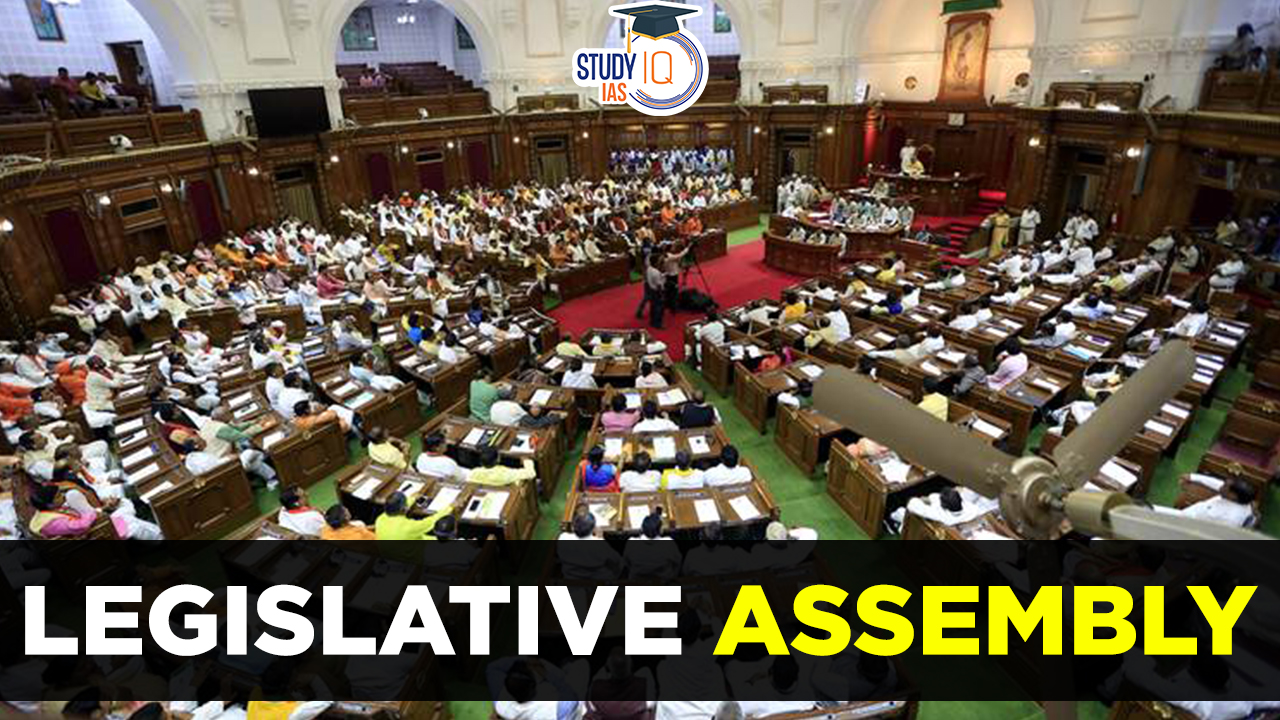Table of Contents
Legislative Assembly
One of the components of the public authority is the Legislative Assembly. It has the authority to enact laws for a country or a state. Regulations are the rules created by the assembly. There are a number common titles for the legislative body that vary from country to country, including assembly, congress, diet, houses, parliament, duma, etc. Different assemblies play different roles.
However, they are entirely framed by the portrayal of people, which is typically done through the general adult establishment. The Legislative Assembly is an important part of Indian Polity which an important subject in UPSC Syllabus. Students can also go for UPSC Mock Test to get more accuracy in their preparations.
Legislative Assembly Meaning
The popular House of a State is called the Legislative Assembly. The Chief Presiding Officer of a State’s Legislative Assembly is the Speaker. He is chosen by the Assembly members voting among themselves. When the Speaker is not present or when the Speaker’s position is vacant, the Deputy Speaker preside.
However, when both the Speaker and Deputy Speaker positions are vacant, the Governor may appoint members of the assembly to fill the vacant positions. Members of the Legislative Assembly are chosen directly by the people from territorial constituencies in the State in accordance with the universal adult franchise principle.
Legislative Assembly Composition
The State Assembly may not have fewer than 60 or more than 500 total members of the Legislative Assembly. For small states, the centre has set a lower number of members. According to population, a State seat in the Legislative Assembly is set aside for members of the Schedule Castes and Schedule Tribes.
Legislative Assembly Duration
Every State’s Legislative Assembly has a five-year term that can be dissolved earlier by the Governor. The Legislative Assembly of States now has a six-year tenure, up from the previous five years, per the 42nd Amendment Act of the Constitution of 1976. The State Legislative Assemblies’ five-year terms were reinstated by the 44th Amendment Act of 1978.
The life of the Assembly during the national emergency may be prolonged by an act of parliament for a maximum of one year at a time, but in no instance for more than six months after the proclamation has ceased to be in effect.
State Legislative Assembly
The state legislative assembly is another name for the Vidhan Sabha, the lower house of the state legislature. Its members are elected by the general public and have five-year tenure. Legislative systems come in two varieties: unicameral and bicameral. In the latter, two houses are present and share power in creating laws at the federal and state levels, as opposed to the former, where only one house is allowed to create and carry out laws at the federal and state levels. India is an illustration of a country with a bicameral legislature. Six of the 28 states listed here have both a legislative council and a state legislative assembly, as do all the union territories.
Members of Legislative Assembly
The State Legislative Assembly might have as few as 60 and as many as 500 representatives. Goa, Arunachal Pradesh, and Sikkim are the only states that are exempt from this rule and are allowed to have relatively smaller Assemblies. However, the population-to-state legislature seat ratio ought to be roughly the same in every state.
Legislative Assembly Members Qualification
They must be Indian citizens, be at least 25 years old for the Legislative Assembly and 30 years old for the Legislative Council, and meet the requirements set forth by the Parliament.
Legislative Assembly UPSC
This article has all the information related to Legislative Assembly for UPSC. In accordance with Article 169 of the Indian Constitution, Parliament has the authority to establish and dissolve the Legislative Council, and it has done so during the Independence Era. Due to a delay in passing and adopting pertinent legislation, this was done.
Legislative councils, on the other hand, are accountable bodies that can play a significant role in policies and program for the development of states. As important components of the State Legislature, the Legislative Council and the Legislative Assembly are both mentioned. Students can read all the details related to UPSC by visiting the official website of StudyIQ UPSC Online Coaching.


 Chief Election Commissioner And Other El...
Chief Election Commissioner And Other El...
 Centre urges States, UTs to Enforce Sect...
Centre urges States, UTs to Enforce Sect...
 Salient Features of Indian Constitution,...
Salient Features of Indian Constitution,...




















